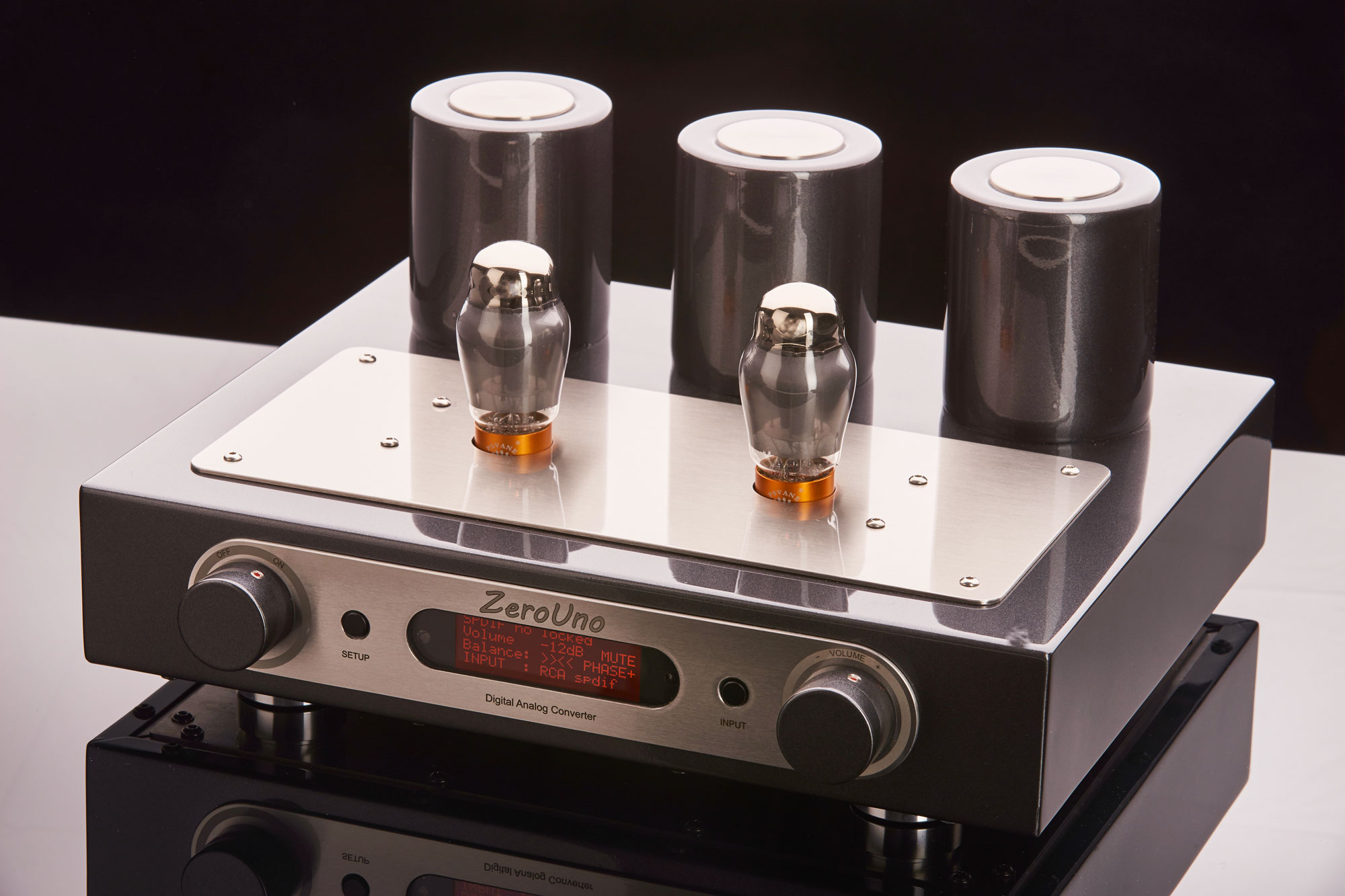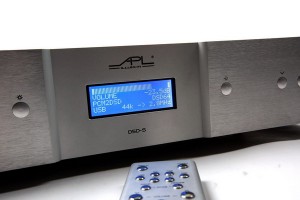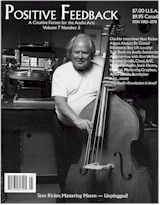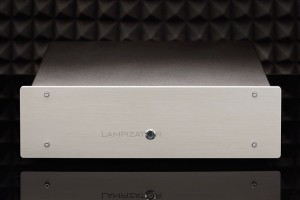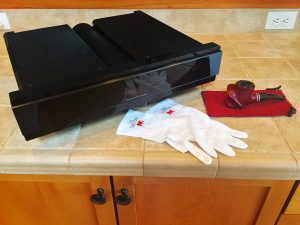Introduction to Part Two
Having described the sound of the ZeroUno in the foreground in the first part of this review, I will in this second part of my report consider the technical details of the DAC. During the time I have worked with the ZeroUno, I had the opportunity to talk with Mario Canever in person about the technical approach that he has chosen in his design of the ZeroUno.
During our meeting, I found Mario Canever to be an incredibly competent engineer who is familiar in every small detail of electronic design, whether it is an analogue or a digital topic. Although he has such wide knowledge and skills on these matters, he never once sounded pompous or arrogant. What was originally planned as a short interview ended up being several hours of interesting tech-talk. From the records that I made during the conversation, I picked out the most interesting aspects and summarized them in the following section. Perhaps after reading this article, you will consider some other audio gear that you might know of with different eyes. So let us look behind the scenes of the development of an outstanding DAC.
A conversation
My conversation with Mario Canever about the ZeroUno started with a closer look at the motherboard, the central part inside the DAC's cabinet. In a DAC, which processes digital signals with a frequency of up to 12,228 MHz, and at the same time handles analog signals of very low level, the protection against electromagnetic induction and the correct grounding of all circuits are musts for reaching good sonic results. The entire circuit of the ZeroUno, except for the USB-input module, is based on a single, large four-layer board with extra thick conductor tracks. The board ensures very short signal paths and minimum external wiring cable. Digital and analog parts of the circuit are carefully separated, while placed on the top and on the lowest layer of the board. Of the two middle layers, one is reserved for the management of the power supply, and one for the grounding. All stages in the circuit are decoupled by small bypass capacitors. Designing the board and the main circuit took Mario Canever a whole month of development work. In most of the design, he made no use of the automatic routing routines of computer based CAE systems, while placing the approximately 500 to 600 components manually.
The large four-layer motherboard: On the left, the power supply for the tube output stage, in the center the tube output stage. Above, partly covered by the small USB board, one can see the SABRE 9018s DAC chip. Finally, on the right side, are the other power supply components.
Mario Canever is sure that the performance of an audio circuit is heavily depending of the quality of its power. "Approximately 60 percent of development time for the ZeroUno was dedicated to the development of the power supply. Our goal was to keep the noise in the power supply as low as possible. In many audio products, such interfering components are present and affect the sound negatively." That is definitely not a new insight. Anyone who has experienced the impact of an improved power supply to the sound of an already outstanding pre-amp will agree with me. Less well known is the fact that this is also true for digital components, such as DACs and music servers, even, if it is assumed that here only "ones" and "zeros" have to be processed. In particular, the mostly cheap switching power supplies sometimes used even in very expensive audio products are a nightmare for me. On the other hand, it is a well-known fact that a good power supply is never cheap to build. The consistency and the effort with which the linear power supply of the ZeroUno was designed are exceptional.
A good linear power supply starts up front with the quality of the transformer and the rectifiers. The base of the ZeroUno's power supply are four toroidal transformers: One for the digital part, one for the analog section, and two for the power supply and the heating circuit of the tube output stage. For the rectification, special Silicon Carbide diodes are used, which are free of "converting spikes". Then follow a total number of 13 separately stabilized voltages for different parts of the circuit. The stabilization works in two stages. In the first stage, after the rectification, a pre-regulator provides an already very clean DC voltage. Furthermore, it isolates the following main control in the second stage from the mains voltage and potentially induced noise from there. The primary controller is using an integrated voltage regulator of the latest generation, which not only shows impressive technical specs, but which is said to have a very good sound too. One pre-regulator in this case supports several main regulators. The regulators in the second stage supply the central circuit units of the ZeroUno with extremely clean voltage. For the supply of particularly critical circuit parts - such as the "main clock"—four of these controllers are not designed using integrated fixed voltage regulators, but discreetly with the top operational amplifier AD 797. This amp is commonly used in output stages of high-end audio amplifiers, and is among the best components that you can buy for those purposes. These regulators have excellent control characteristics and offer extremely high signal to noise ratios. Throughout the power supply organic polymer aluminum capacitors come instead of standard electrolytic capacitors, which are commonly used. To further filter out noise, small inductors are used following the regulators.
The power supply for the tube output stage is designed as a double pi-filter. A pi-filter is a combination of a coil and a capacitor, with particularly effective filtering applied to any still-existing residual ripples from the rectification. With two-pi filters cascaded, the same quality as using an active stabilizer circuit can be achieved, but different from that, in a purely passive filter. Mario Canever talks of "no feedback solution," and he is convinced that this would fit very well into the characteristics of the tube output stage. The heating voltage for the tubes in turn is stabilized electronically.
For the USB input, Mario Canever relies on the proven XMOS Xcore audio chip, that supports the bit-perfect transfer for 16-bit, 24-bit or 32-bit data in PCM format up to 384 kHz, and allows the playing of DSD files in DoP mode (up to DoP 128), or native DSD (up to DSD 256) format. The USB port is located closely on top of the digital to analog converter, in order to make the signal path as short as possible. The firmware is stored in a separate memory chip, and allows for future upgrades. The USB module is not powered via the USB cable, but through a special 5V voltage regulator described above. Additionally a super capacitor with a capacitance of 1 Farad (!) buffers the voltage and forms an additional 5Hz filter. During the listening sessions, this elaborate USB input proved to work excellently.
To guaranty a perfect timing of all processes within, the ZeroUno DAC uses a highly accurate clock with a frequency of 100 MHz from Crystek, providing extremely low phase noise and jitter. In addition, two other clocks take care of the sampling rate of incoming PCM and DSD signals. The digital-to-analog conversion is performed by the ESS SABRE32 ES9018s. This chip contains eight pairs of converters, and is a marvel of chip technology. It operates internally on a 32-bit basis, offers different filter characteristics for PCM and DSD, a patented algorithm for jitter reduction, and an integrated 32-bit volume control. Although all those specs sound very impressive, so far many DACs that use this chip never sounded convincing to me. Asking for more details, Mario Canever told me, "In my opinion, the reason why many DACs using the SABRE 9018s do not deliver a convincing level of sound quality is because the chip is delivered by the manufacturer only in a standard configuration, which does not allow the true performance capability of this chip, to stand out. Unfortunately, the documentation available from the manufacturer is very rudimentary. As a result, the chip in many DACs is used only in the default configuration provided by the manufacturer." Mario Canever had to collect, in a painstakingly process, all the information about the ESS SABRE chip available on the Internet and in various forums. Finally, in the ZeroUno the 9018s is connected internally in a two-channel configuration, in which each channel consists of four pairs of converters in a differential configuration. The heart of the DAC is a completely new firmware package, which Mario Canever has programmed for the 9018s. The program consists of more than 3000 lines of code! This self-programmed firmware seems to be mainly responsible for the beautifully soft and natural sound of the DAC, which impressed me so much during the listening test. The specific configuration of the SABRE chip is to eliminate artifacts in the digital part of the circuit, which could have a negative effect on the sound quality. The firmware itself is stored in a small memory device, which offers the possibility of future upgrades.
The transformer from Lundahl for coupling the DAC to the tube output stage.
For the coupling of the output of a DAC chip to the output stage, a current-voltage conversion is required, which is normally implemented with active devices such as transistors or ICs. In an unconventional way, the ZeroUno DAC makes use of a transformer for this task. This results in a minimal number of components in the signal path and at the same time keeps the signal path extremely short. In addition, the transformers act as a first-order analog filter to suppress residual distortion and noise components, keeping them away from the output stage. Mario Canever openly admits: "I have developed the filter in a kind of trial and error method." The transformers are manufactured by Lundahl according to the specifications of Mr. Canever. He has also assured me that those transformers have no negative influence on the sound, and that the benefits would outweigh potential disadvantages by far.
Regarding the significance of the analog output stage of a DAC, I completely agree with Mario's position: "The real secret of a good sounding DAC is the topology and the quality of the analog output stage!" Talking to Mario Canever proved him a true specialist for tube circuits. Not surprising, therefore, is the use of tubes in the output stage of the ZeroUno DAC. The output stage is a pure buffer in Class-A technology without global negative feedback, while the two halves of the double triodes are interconnected in such a tricky way, that distortions effectively eliminate each other. The circuit requires only a minimum of components, which are of the highest quality.
The CV181 of Psvane in its full beauty.
The output stage of the ZeroUno comes standard with noblest variant of all 6SN7 tubes, a replica of the famous MULLARD CV181 made by Psvane. The CV181 has a graphite coating at the inner side of the glass bulb, which reduces the tubes microphonic sensitivity and dissipates heat better. As capacitors, especially those in the signal path, one can find all things good and expensive: OBBLIGATO GOLD PREMIUM and Vishay MKP film capacitors, as well as Superior Z-Caps made by JANTZEN. This is a clear indication of the effort done during the development phase, to fine tune the sound of the ZeroUno DAC by serious listening. The resistors used are carbon film types, which are well known for their particularly good tonal attributes in tube stages. Mario Canever does not conceal the fact that he was using his ears to identify the right type of components, although from a pure measurement point of view, maybe metal foil resistors would have been the correct choice.
A true collection of audiophile capacitors in the tube output stage.
Shortly after completion of the first part of my report, I got the message from Mario Canever that all future models of the ZeroUno DAC will come with analogue outputs via RCA and XLR connectors. While the signal connected to the XLR output is still unbalanced, this option gives the customer the freedom of choice regarding the type of cables he likes best, instead of using RCA/XLR adapters, which often degrade the sound quality.
The new backplane of the ZeroUno DAC showing the RCA and XLR analogue output connections.
The ZEROUNO is a rarely-seen symbiosis of thoughtful circuit design in all aspects, using extremely high-quality components, while showing a perfect finish too. The sound quality as well as the ability of this DAC to play music is remarkable. I would like to see more such audio products on the market.
To sum it up, I would like to quote Mario Canever once again: "While the SABRE 9018s Chip is the ‘base,’ the proprietary firmware acts as the “brain" and the tube output stage is the real “heart" of the ZeroUno DAC!"
LISTENED WITH
- NAS Windows Home Server with MinimServer
- Computer JPlay Control PC: Intel Core i5 2,5 GHz, 6 GB Windows 10, Fidelizer 7
- JPlay Audio PC: Intel Core Duo 2,2 GHz, 4 GB Windows 10, Fidelizer 7
- Audioplayer JPlay 6.2
- Preamp Omtec Anturion
- Poweramp Einstein – The Poweramp
- Loudspeaker Outsider Jota with Velodyne Subwoofer Management System SMS-1
- Cables Van den Hul, JCAT USB, JCAT Reference LAN
ZeroUno DAC
- Dimensions (W / H / D): 40 / 18.3 / 36cm
- Weight: 10.1kg
- Digital Inputs:
- SPDIF/RCA, SPDIF/75ohm BNC (optional: AES/EBU-XLR), SPDIF, USB
- Sampling Rates:
- PCM: 44.1 kHz, 48 kHz, 88.2 kHz, 96 kHz, 176.4 kHz, 192 kHz, 352.8 kHz, 384 kHz;
- DSD over PCM: 2.822 MHz, 3.072 MHz, 5.644 MHz, 6.144 MHz (ready for native DSD up to DSD256)
- Analog-Outputs: RCA/XLR (unbalanced)
DISTRIBUTION
Friends of Audio
Dipl. Ing. Rainer Israel
Heinrichstraße 26
64347 Griesheim
GERMANY
CanEVER Audio home page: www.canever.eu/









